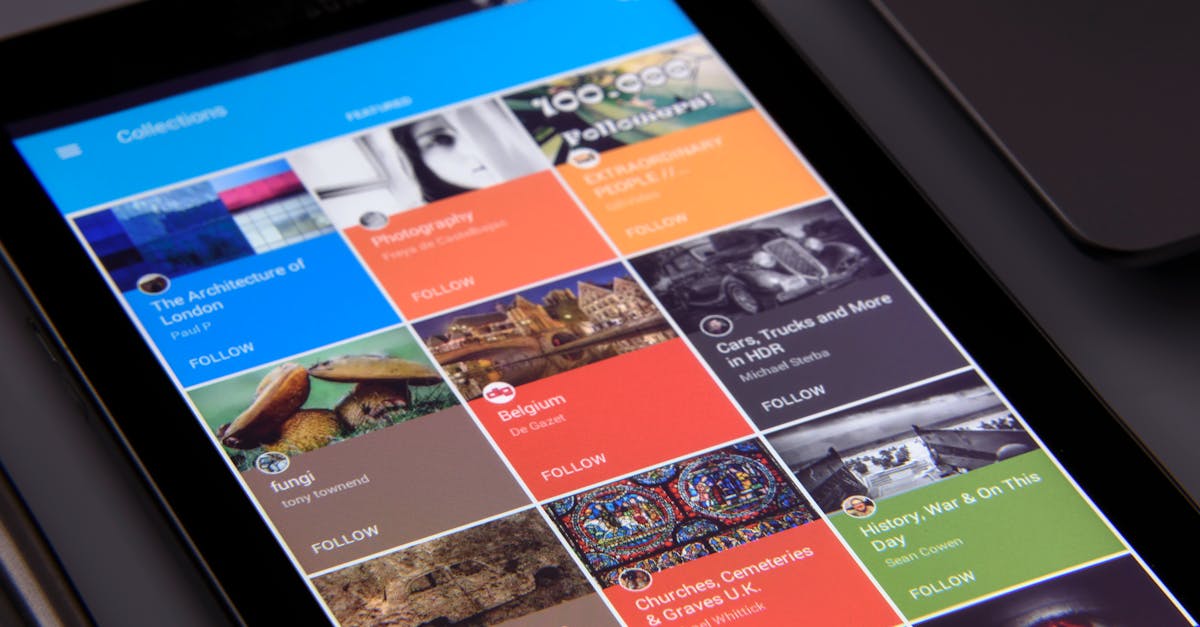Decoding the Mobile News Pulse
Introduction to Mobile News Pulse
In an age where technology drives our daily routines, keeping up with current events has never been more convenient, thanks to mobile news apps. These platforms offer real-time updates and personalized news feeds at the touch of a button. From Apple's News to Google's Newsstand, they have revolutionized how we consume information. As smartphones penetrate markets globally, mobile news apps are reshaping the news landscape remarkably. They offer not only convenience but also a variety of content tailored to individual preferences. But how did these apps become so central to modern media consumption?
Advertisement
A Brief History of Mobile News Apps
The first major leap toward mobile news was made with the launch of iPhone in 2007, which opened avenues for various media outlets to venture into digital spaces. The development of apps like Flipboard and Pocket soon followed, offering innovative methods of collating news from diverse sources. Initially, these apps served as supplementary platforms, but they quickly gained traction, enabling users to save and read articles at their leisure. Over time, mobile news apps enhanced their functionalities, incorporating multimedia elements and user-centric interfaces. As smartphones evolved, so did the technology behind these apps, making them indispensable parts of our content diets.
Advertisement
The Appeal of Readily Accessible News
The allure of mobile news apps lies in their convenience and immediacy. With push notifications and breaking news alerts, users are never more than a glance away from the latest headlines. This immediacy allows individuals to stay informed without disrupting their schedules. Furthermore, mobile news applications bridge the gap between real-time reporting and personalized news consumption, offering custom feeds based on interests and reading habits. Such personalization fosters engagement, encouraging users to return to the app repeatedly. Beyond traditional articles, many apps now include video content, podcasts, and interactive features, broadening the scope of storytelling in the digital age.
Advertisement
Impact on Traditional News Media
Mobile news apps have significantly altered the commercial model for traditional news outlets. As print readership declines, many newspapers and magazines have heightened their focus on digital platforms. Some publishers have even launched app-only content to cater specifically to mobile-first audiences. However, this shift hasn't come without challenges. While digital subscriptions have helped recoup some revenue lost from print sales, they seldom match the financial returns of physical copies. Additionally, the pressure to produce timely updates can sometimes result in diminished content quality. As news outlets compete in the intense mobile space, the value of investigative journalism is often questioned.
Advertisement
The Shift Toward Hyperlocal Content
A notable trend in mobile news apps is the growing focus on hyperlocal news. Apps like Patch and Nextdoor provide users with community-specific coverage, from local government updates to neighborhood events. This shift towards hyperlocalism reflects a current cultural craving for more personalized and relevant content. By delivering news rich in local flavor, these platforms foster community engagement and participation. Moreover, sources of hyperlocal news can uncover stories that might otherwise go unnoticed, offering fresh perspectives and narratives less explored by mainstream media. This fosters a more connected and informed community, making news more than just global headlines.
Advertisement
Ethical Considerations and Fake News
The rapid dissemination of information through mobile apps has its drawbacks, particularly in the context of fake news. The rise of misinformation challenges both app developers and media organizations to remain vigilant. Many news apps now deploy curation and fact-checking teams to manage and verify information before publication. Despite these efforts, the ease of sharing unverified content remains a hurdle that challenges the credibility of established news institutions. Apps are increasingly taking responsibility, implementing stricter guidelines and collaborating with fact-checking organizations to mitigate the spread of fraudulent news. This is vital to maintaining public trust and the integrity of journalism.
Advertisement
The Role of User Data in Personalization
Mobile news apps are at the forefront of using big data to deliver an optimized user experience. By analyzing user preferences, reading habits, and engagement patterns, these apps offer curated content that aligns with individual interests. While personalized news feeds enhance engagement and user retention, they also raise privacy concerns surrounding data collection. Transparent data policies and user consent are crucial to building trust in the digital ecosystem. Ethical use of data ensures that users benefit from tailored content while safeguarding their autonomy and privacy. In fostering this balance, apps can maintain a positive relationship with their audiences.
Advertisement
The Future of Mobile News Platforms
As we look to the future, mobile news apps will likely continue to innovate, introducing new features such as augmented reality and AI-driven content generation. This technology will make news consumption more interactive and engaging, allowing users to experience stories in novel ways. Furthermore, partnerships with journalists and media companies may yield exclusive content for mobile audiences, differentiating offerings across platforms. However, the sustainability of free-access models in light of ad-blocking technology remains a critical consideration. As these apps evolve, sustaining quality journalism while adopting user-friendly models will remain a delicate balance.
Advertisement
Case Studies of Successful Mobile Apps
Examining particular apps can offer insight into what drives their success in an increasingly competitive market. For instance, apps like BBC News and New York Times have refined their user interfaces, enhancing navigability and user engagement. They've also introduced subscription models that provide access to premium content, offering value beyond open-access news. Meanwhile, platforms like Buzzfeed have thrived by blending traditional reporting with engaging formats, such as quizzes and listicles, proving that infotainment has a lucrative niche. Through these strategies, mobile news apps continue to redefine digital news, attracting diverse audiences and fostering unique user communities.
Advertisement
The Path Ahead for Mobile News
Mobile news apps embody the future of news consumption, facilitating unprecedented access to information across the globe. As our media landscapes evolve, they continue to play a crucial role in shaping public discourse. By embracing technological advancements while tackling challenges such as misinformation and ethical reporting, they can maintain user trust and continue thriving in the digital age. Ultimately, their success hinges on balancing innovation with responsible journalism, providing insightful and engaging content that informs and connects communities worldwide.
Advertisement








